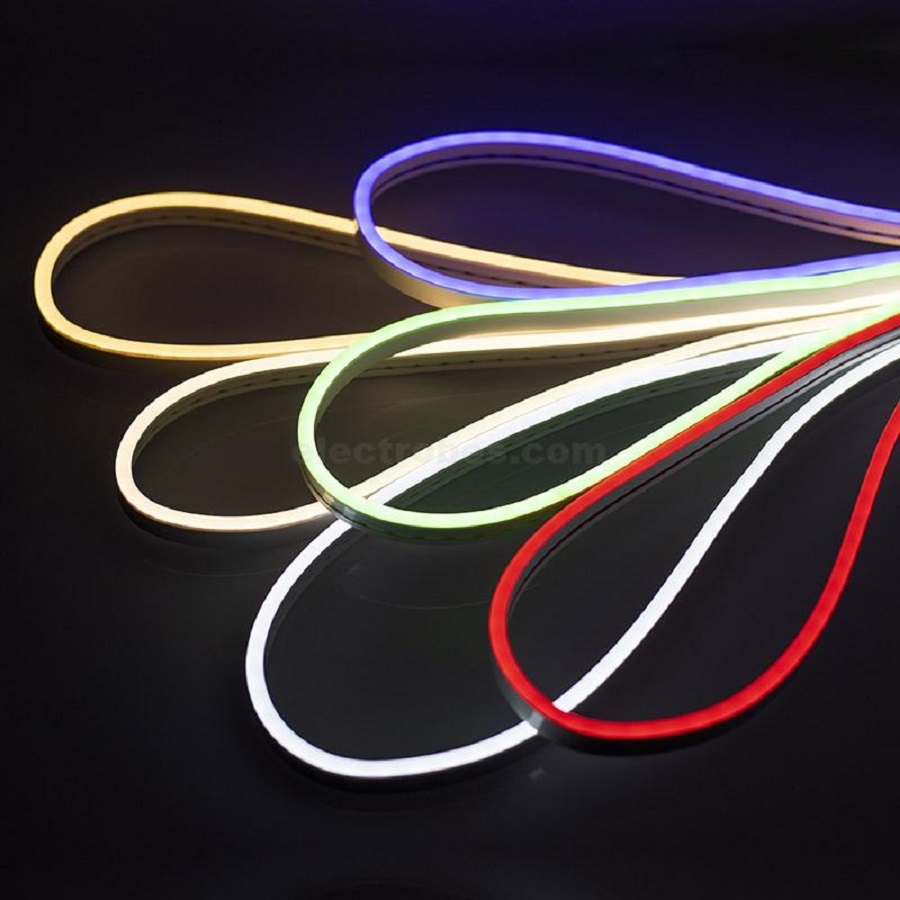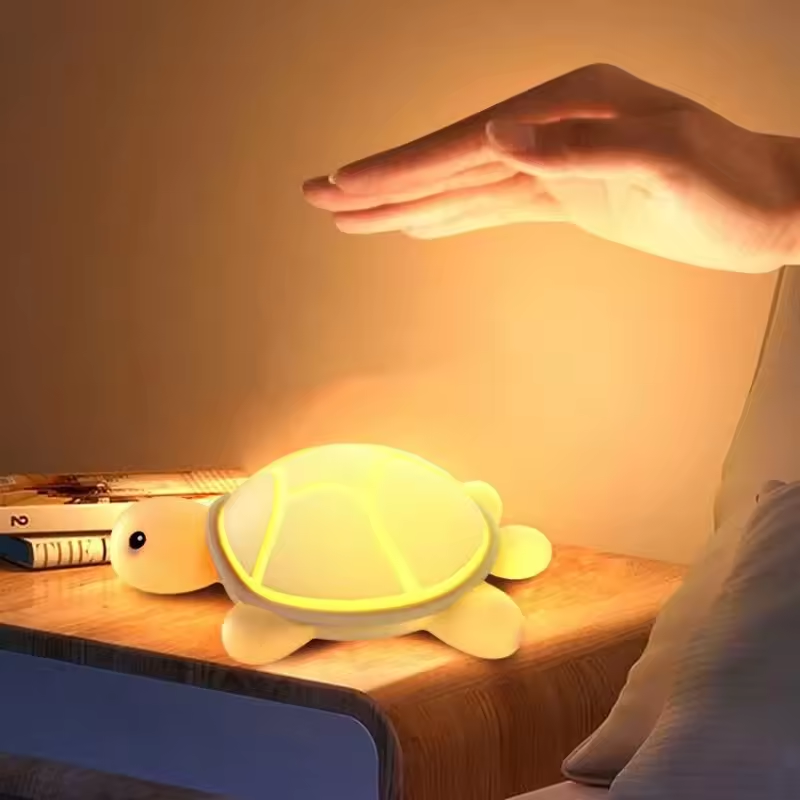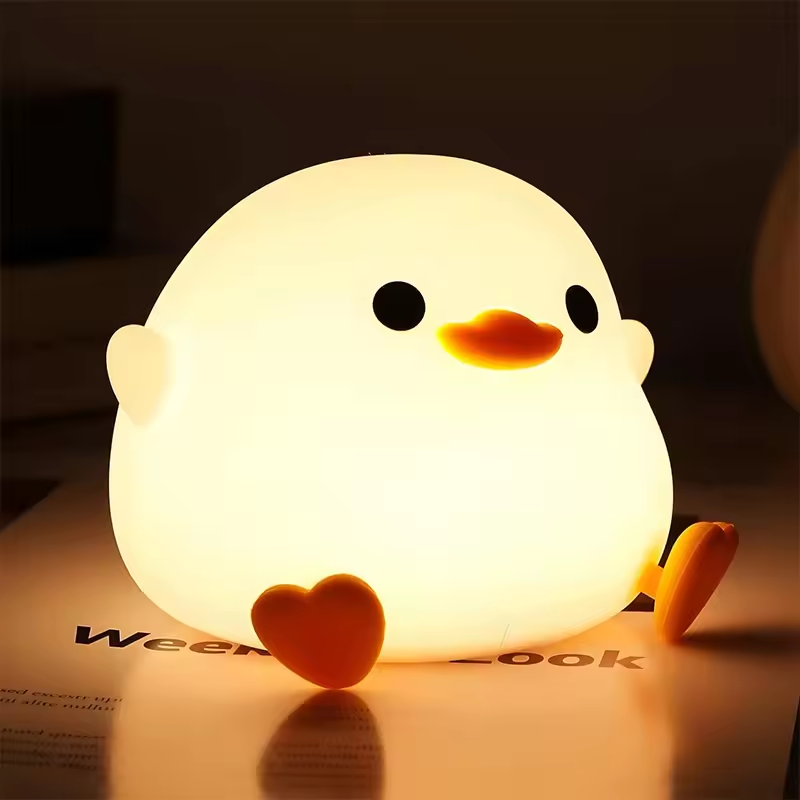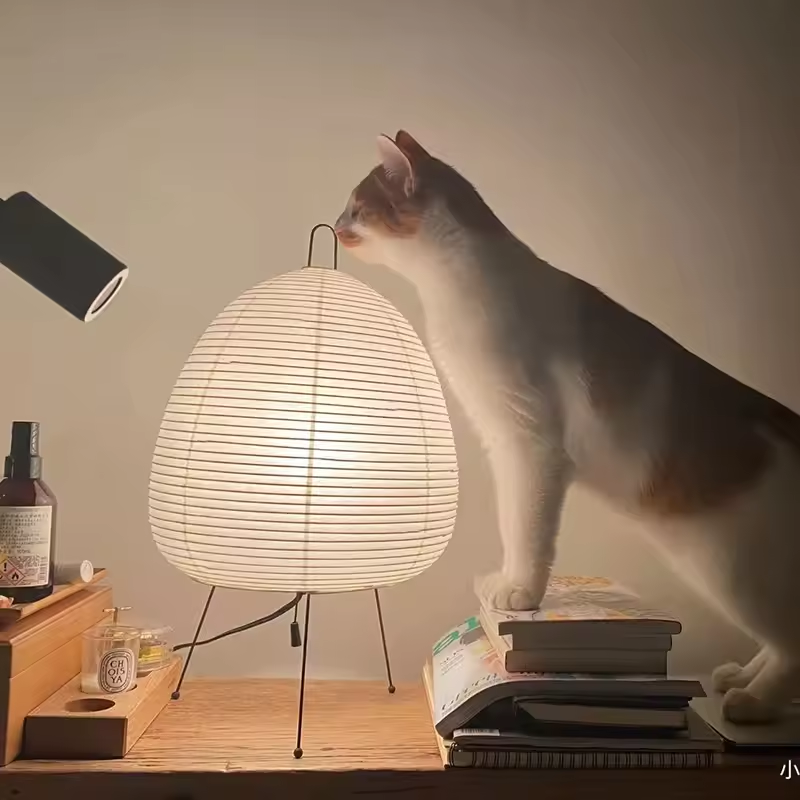Introduction
LED light strips are a revolutionary way to enhance your living environment, offering versatility, energy efficiency, and a vibrant spectrum of colors. Whether you’re aiming to create a cozy atmosphere in your home, add striking effects to your entertainment space, or boost productivity in your workspace, LED light strips can elevate your space dramatically. In this comprehensive guide, we’ll explore everything you need to know about LED light strips, from types and installation to creative uses and maintenance.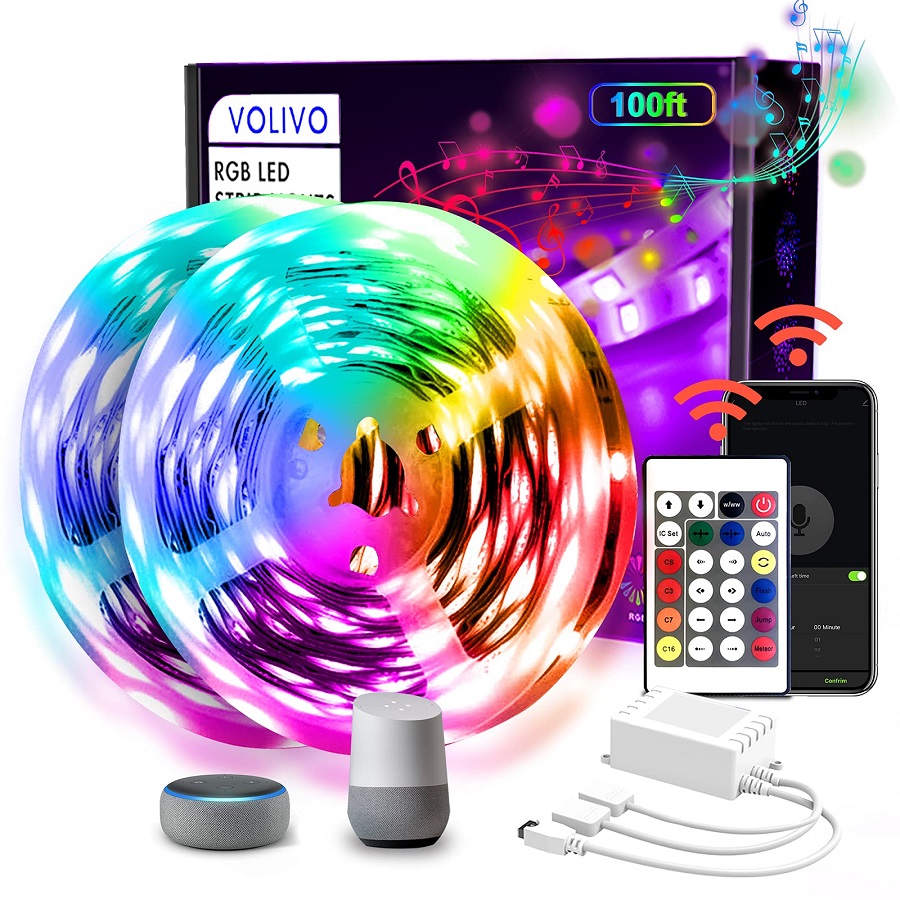
What are LED Light Strips?
LED (Light Emitting Diode) light strips are flexible circuit boards that house numerous tiny LED lights. They come in different lengths, colors, and brightness levels, providing an array of customization options to suit individual tastes and needs. Typically adhesive-backed, they can be easily attached to various surfaces, making them a popular choice for both residential and commercial applications.
Types of LED Light Strips
- Single Color Strips: These strips emit one color of light. They’re ideal for achieving a uniform glow or accent lighting in a specific hue.
- RGB Strips: Capable of producing a full spectrum of colors (Red, Green, Blue), RGB strips can change colors and are often controlled via remote or smartphone app. They’re perfect for creating dynamic lighting effects.
- RGBW Strips: Similar to RGB strips but with an additional white LED, these strips can produce pure white light in various temperatures (warm to cool) along with the full RGB color range.
- Addressable LED Strips: These advanced strips allow individual control of each LED, enabling complex animations and effects. They are often used in creative installations and can be mapped to music for enhanced visual experiences.
- Smart LED Strips: Connect to Wi-Fi or Bluetooth, enabling control through mobile apps or voice commands via smart home devices. These strips often support numerous features such as scheduling, scene creation, and connectivity with other smart devices.
Benefits of Using LED Light Strips
- Energy Efficiency: LED strips consume significantly less power than traditional incandescent or fluorescent lighting, translating to lower electricity bills.
- Longevity: With a lifespan of up to 50,000 hours or more, LED light strips are a long-lasting lighting solution, reducing the need for replacements.
- Ease of Installation: Most LED strips come with an adhesive backing, making them easy to install on various surfaces. Many kits include connectors and dimmers for user convenience.
- Versatility: LED strips can be used in various environments, including homes, offices, retail spaces, and outdoor patios. They can be applied to furniture, walls, ceilings, and even floors.
- Aesthetic Appeal: The wide range of color options and flexible designs enables users to create dramatic effects and personalized ambiance to match their style or mood.
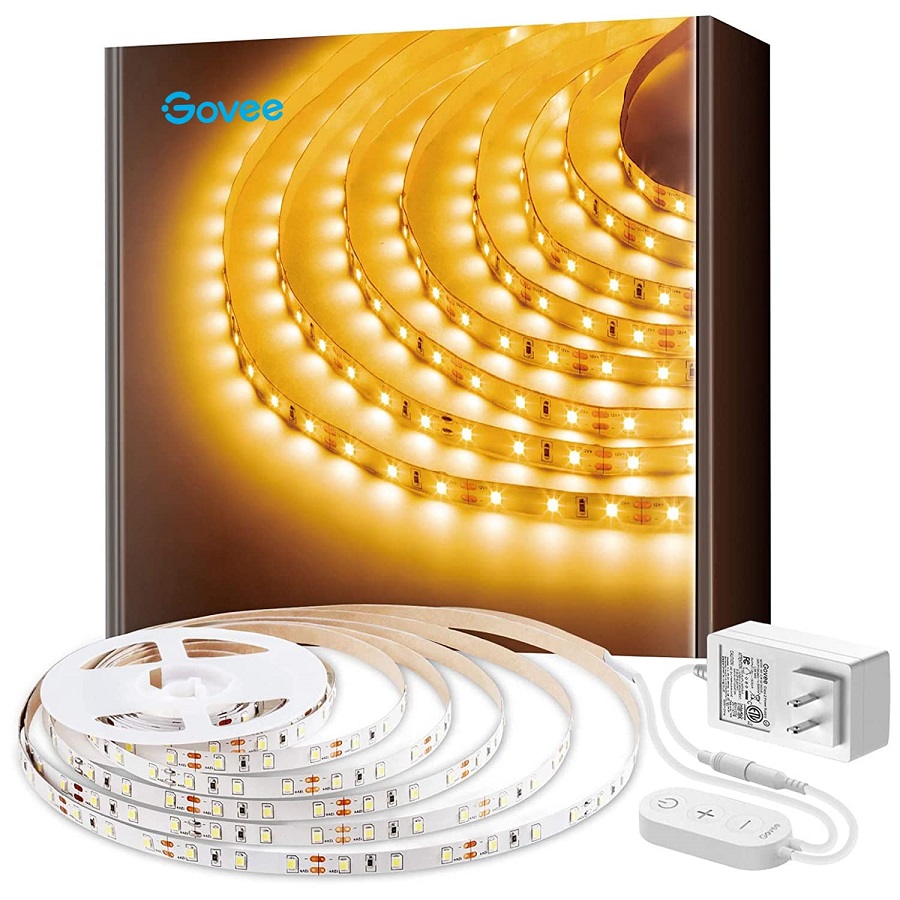 Installation Guide
Installation Guide
What You’ll Need
- LED light strip kit (including remote and power supply)
- Clean cloth (for surface preparation)
- Scissors (for cutting strips)
- Connector clips (optional)
- Mounting brackets (optional)
Steps to Install LED Light Strips
- Choose Your Location: Determine where you want to install the light strips. Common locations include around televisions, under kitchen cabinets, along staircases, or behind furniture.
- Prepare the Surface: Ensure the surface is clean and dry. Dust and grease can impact adhesion.
- Cut to Size: If your LED strip is longer than needed, carefully cut it at designated points—usually indicated with scissor icons on the strip.
- Peel and Stick: Remove the adhesive backing and firmly attach the strip to the desired location. Press down for several seconds to ensure it adheres properly.
- Connect to Power Supply: Once the strip is in position, connect it to the power supply. Follow manufacturer instructions for safe connection.
- Test the Lights: Turn on the power and use the remote control or app to adjust settings, brightness, and colors. Ensure everything functions as expected.
- Secure Wiring: Organize and secure any visible wiring to maintain a clean and neat appearance.
Advanced Installation
For a more professional look, consider incorporating connector clips and brackets to refine the installation. If you’re using addressable or smart LED strips, additional setup may be required for programming and effects.
Creative Uses for LED Light Strips
- Accent Lighting: Use LED strips behind furniture, mirrors, or artwork to create depth and interest.
- Backlighting for TVs: Enhance your viewing experience by placing strips behind your television to reduce eye strain and add visual interest.
- Under-Cabinet Lighting: Perfect for kitchen spaces, LED strips illuminate countertops, making cooking easier and safer.
- Mood Lighting: Create different atmospheres with color changes for reading, relaxing, or entertaining.
- Event Decor: From parties to holiday gatherings, use LED light strips to set the mood and create festive displays.
- Office Illumination: Install in your workspace for better productivity and a personal touch.
Maintenance Tips
While LED strips require minimal maintenance, keeping them clean and functional is essential for longevity. Here are some upkeep tips:
- Dust Regularly: Use a soft cloth to gently wipe off dust and debris from the strip and its surface.
- Check Connections: Periodically inspect connections for wear or corrosion, ensuring they remain secure.
- Avoid Excessive Heat: While LED strips generate less heat than traditional lights, avoid placing them near heat sources for optimal performance.
- Upgrade as Needed: Technology in LED lighting constantly evolves. Consider upgrading to smart or addressable options for enhanced functionality and aesthetic appeal.
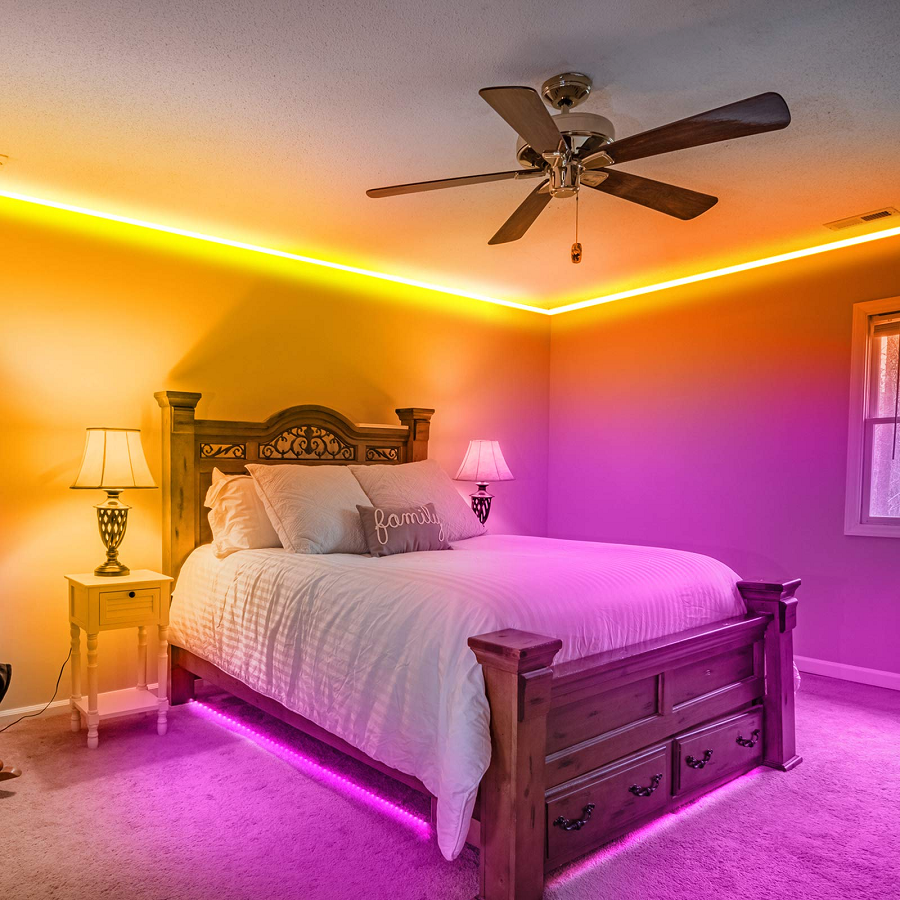 Accent Lighting for Architectural Features
Accent Lighting for Architectural Features
One of the most sophisticated ways to use light strips is to highlight architectural features in your home. Consider running a strip along the underside of floating shelves, creating a soft glow that draws attention to the items displayed. You can also apply them around door frames, coves, or window ledges to accentuate these architectural elements. This not only enhances their visual appeal but also adds depth and dimension to the space.
Under-Cabinet Lighting in the Kitchen
Light strips can transform your kitchen by providing practical and stylish under-cabinet lighting. This not only helps illuminate work surfaces for cooking and prep but also enhances the overall look of the kitchen. Choose warm white or colored strips to add personality to the space. This addition can turn mundane tasks into enjoyable experiences as you cook surrounded by the warm glow of LED lights.
Creative Headboard Designs
For bedrooms, consider using light strips to create a stunning headboard effect. By attaching them behind the bed’s headboard or along the edges of a DIY headboard, you can create a cozy and inviting atmosphere. Opt for soft blue or purple tones to promote relaxation, or full RGB colors to match your mood. Pairing this with neutral bedding can make the light strip a standout feature without overwhelming the space.
Illuminated Staircases
Enhancing your staircase with light strips can improve both safety and style. Installing strips along the edge of each stair can provide visibility in dark areas, making it safer to navigate. Additionally, it creates a modern look that can dramatically transform the space. You might also consider illuminating the risers or the walls flanking the staircase to create a stunning visual effect.
Dynamic Entertainment Areas
For your home theatre or entertainment space, integrating light strips can bring a new level of excitement. Placing them behind your television, along shelves for collectibles, or even around an entertainment center can create an immersive experience. Syncing the light strips with your audio-visual system can enhance movie nights or gaming sessions, making them feel more dynamic and engaging.
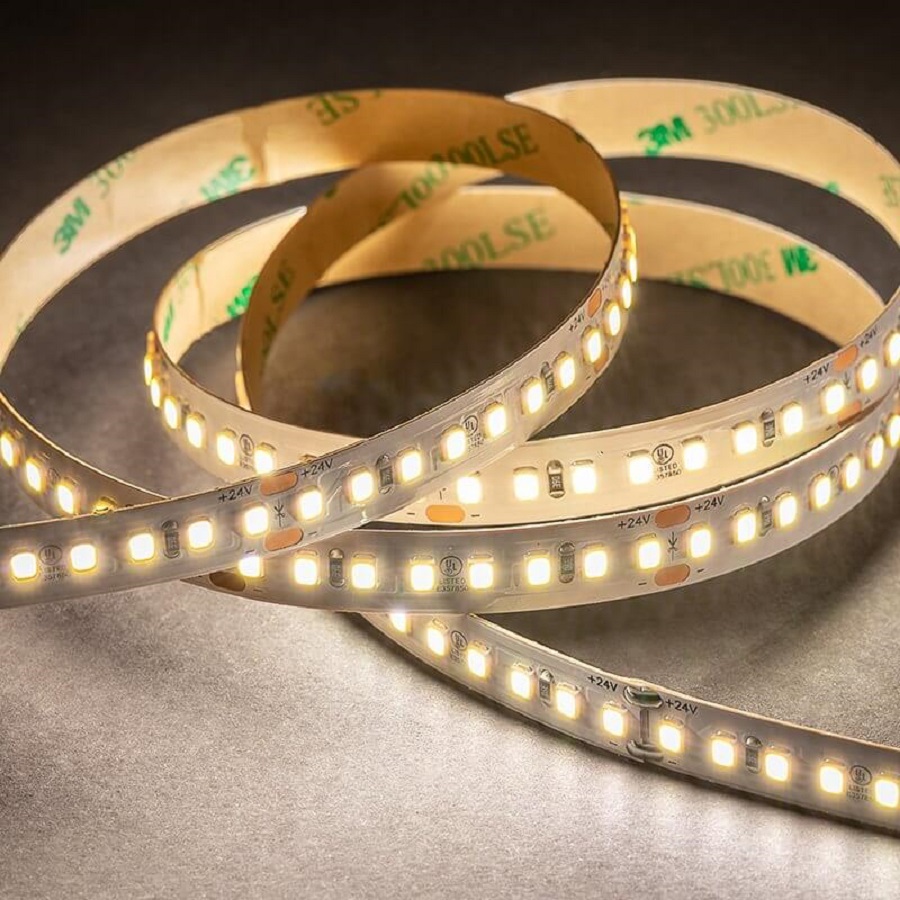 Outdoor Spaces and Patios
Outdoor Spaces and Patios
Don’t forget about your outdoor spaces! Light strips designed for outdoor use can create a magical atmosphere on your patio, balcony, or garden. Wrap them around railings, patio edges, or even trees to add a festive touch for gatherings or romantic evenings. Waterproof features ensure durability against the elements, allowing you to enjoy a beautifully lit space year-round.
Framing Mirrors for Glamour
Using light strips to frame mirrors can give any room an elegant touch, reminiscent of Hollywood-style vanity setups. Attach strips around the perimeter of a bathroom or dressing room mirror to brighten the space and provide flattering lighting for grooming. Soft white light works best, creating a flattering glow that’s perfect for applying makeup or styling hair.
Mood Lighting for Different Occasions
Light strips are incredibly versatile, allowing you to change the mood of a room with ease. Many strips come with remote controls or smartphone apps, enabling you to adjust brightness and colors to match different occasions. For a cozy evening, choose warm hues; for a lively gathering, opt for bright, vibrant colors. This adaptability makes light strips an excellent addition to social spaces like living rooms and dining areas.
Creating a Cozy Reading Nook
If you’re an avid reader, consider adding light strips to your reading nook. Install them along shelving units or directly above your favorite chair to provide focused lighting. Use softer shades for a cozy atmosphere; alternatively, if you have specific colors you love, customize them to create an ambiance that reflects your personality.
Artistic Touch by Creating Shapes
For a truly unique design element, consider placing light strips creatively to form shapes or patterns on your walls or ceilings. You can create geometric designs, spirals, or even outlines of your favorite artwork. This not only serves as a light source but can also act as a piece of art itself, enhancing the character of your space.
Seasonal Decor Adaptability
Light strips are perfect for changing your decor with the seasons. Whether for winter holidays, summer celebrations, or even autumn themes, you can easily swap out colors to reflect the current mood. Use warm hues for the holidays, bright pastels for spring, or earthy tones for fall. This adaptability ensures that your decor remains fresh and reflective of the seasons.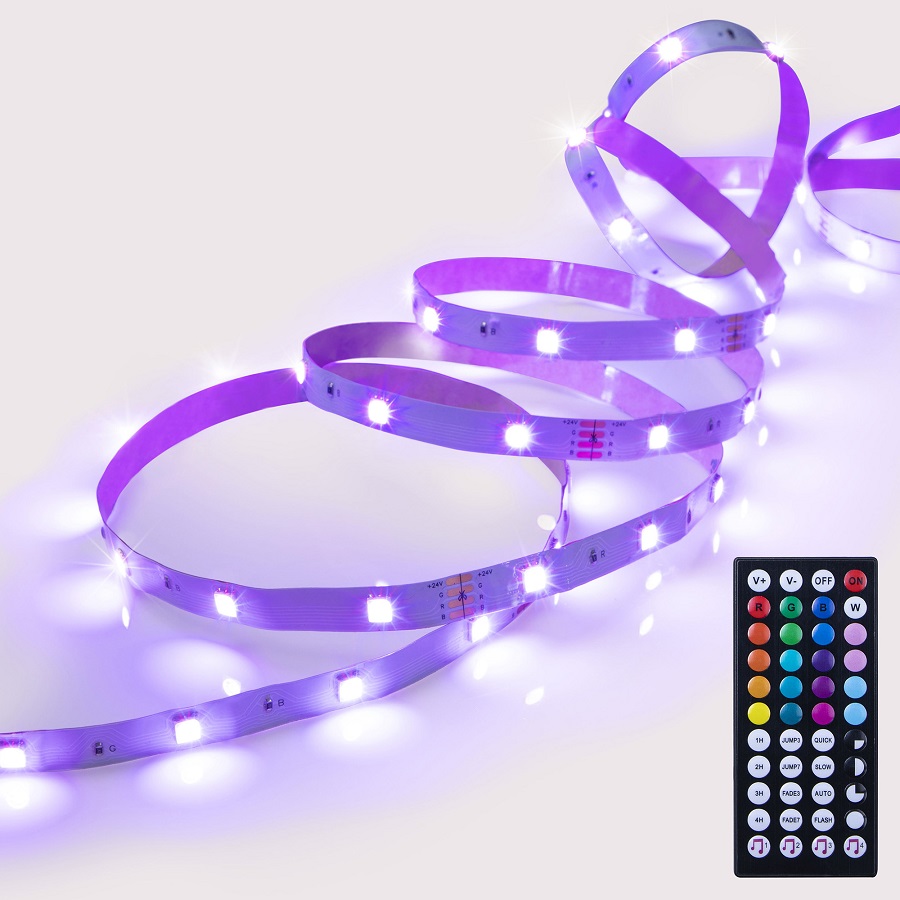
Conclusion
LED light strips are versatile, energy-efficient, and customizable, offering endless possibilities for transforming your space. From vibrant accent lighting to mood enhancement and practical solutions, these strips add style and functionality to any room. With easy installation, low maintenance, and a spectrum of colors, they represent one of the most exciting developments in modern lighting design.
Whether you’re an experienced DIY enthusiast or a beginner just exploring the world of LED lighting, this guide provides you with the knowledge to create your own illuminated masterpiece. Step into the future of lighting and start transforming your space with LED light strips today!
